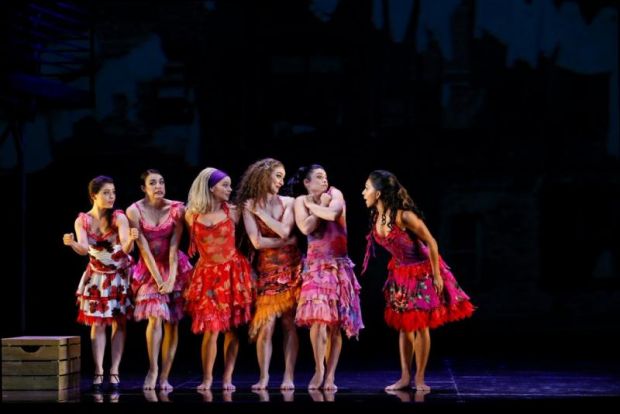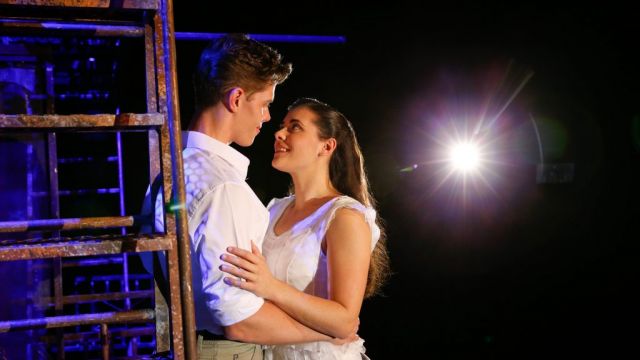West Side Story
It’s hard to believe that when West Side Story opened on Broadway in 1957 it only received two Tony Awards, one for Jerome Robbins’ Choreography and one for Oliver Smith’s set design. Running for only 734 performances, audiences were uncomfortable with the subject matter (street-gang warfare), as they were in Australia in 1960 when it was first produced here. It wasn’t until the 1961 movie version that West Side Story was acknowledged as the groundbreaker that it was.
It was one of the first musicals to require a cast who were triple threat performers; they had to dance like Nureyev, sing like Caruso, and act like Olivier. It’s a tall order and very few companies achieve it.
Joey McKneely’s production is a reworking of the one that toured in 2010, with the same scaffolding-type tenement sets by Paul Gallis dominated by B&W images of New York City circa 1950s as a full stage backdrop.

The show is recognized as being one of the best dance musicals ever written, and it’s in this area that the production took flight. ‘Dance at the Gym’ with its rock ‘n’ roll feel was a highlight, as was the ‘Somewhere’ ballet. The opening Prologue, a highly balletic piece, showed the incredible dance strength of the male corps.
Sophie Salvesani was a perfect Maria and gave the best performance of the night. Head and shoulders above everyone else vocally, her ‘I Feel Pretty’ was stunningly assured, as was her ‘One Hand One Heart’ and ‘I Have a Love’. Opposite her, Nigel Huckle was a light-weight Tony, but he did come through with a nice tenor tessitura in ‘Tonight’. Angelina Thompson’s Anita had plenty of fire, but her vocals were marred by some sloppy enunciation, especially in ‘America’. She had good back-up, though, from Elysha Manik (Consuelo), Nikki Croker (Teresita), Amba Fewster (Francisca) and Amelia Sanzo (Margarita), who all sizzled as the Sharks 'ninas'.

Temujin Tera had the right swagger as Bernardo, likewise the athletic Noah Mullins as Riff. Richie Singer brought strength and some adult wisdom to Doc, Paul Dawber was solid as the acutely racist Lt Schrank, whilst Molly Bugeja, repeating her role from the 2018 production, was a lively, sexually-conflicted Anybodys.
McKneely’s production mirrored that of 2010, with the dance routines copies of Jerome Robbins’ originals. If anything the second-act rape of Anita at the drugstore was more explicit.
But the whole production lacked a sense of menace, and there was little heart. We need to cry for these characters and we didn’t.

The 20-piece orchestra under Isaac Hayward handled Bernstein’s brilliant score with alacrity, despite sounding a touch thin at times. Maybe I’ve just heard it played too often by a symphony orchestra.
Despite that, who could not love the first-act ‘Tonight’ quintet, a thrilling coup de theatre, and the final Maria/Anita duet, ‘A Boy Like That’ and ‘I Have a Love’.
Classic musical theatre!
Peter Pinne
Photographer: Jeff Busby.
Subscribe to our E-Newsletter, buy our latest print edition or find a Performing Arts book at Book Nook.

